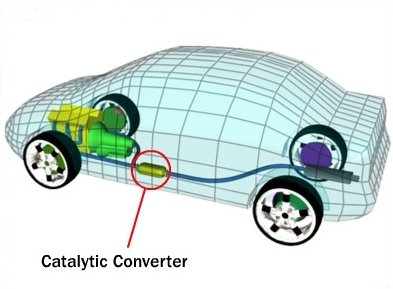Posted on 9/5/2016
Understanding the New York State Automotive Safety Inspections Requirements (Part 2)Safety Items Inspected on Cars and Light TrucksSeat belts: These are inspected for proper anchorage and operation. The inspector will also make sure it works in different positions. We also check the air bag warning light to make sure it functions correctly. Brakes:The inspector must remove at least one wheel to look at the brakes. We will look at vehicle's brake pedal reserve, brake pedal fade, power brake unit, brake master cylinder, disc brake pads, drum brake linings, brake drums and rotors, wheel cylinders and calipers, brake lines and hoses, parking brake and brake equalization. Lights:The lights must be up to certain standards. They are then examined for proper operation, proper mounting, and any broken or omitted lenses. We also inspect headlamps, tail lamp stop, lamps directional signals, backup lights, licen ... read more
Posted on 8/29/2016
Important brake repair and maintenance tips (Part 3)NOTE: This is part 3 of 106St Tire & Wheel's series on brake repair. Click here for part 1. Click here for part 2. Whether your car has quite a few miles on it, or you only recently drove off the lot, you still need to start and stop; accidents can happen to anyone, so you must always make sure your brakes are in good condition. They wear out, and how fast they do is based on a variety of factors, such as the quality of the brake pad, what they are made of, the vehicle specifications, how you drive, and driving conditions – we mentioned in the previous article how New York's driving conditions are categorized as severe. Again, we would like to point out how we at 106St Tire & Whe ... read more
Posted on 8/23/2016
ExhaustWhy You Cannot Ignore That Car Exhaust Repair (Part 2)Getting Things Repaired. It is very important to seek the advice and help of a mechanic rather than trying to deal with a complex system like the exhaust on your own. Indeed, you will generally have neither the equipment nor the knowledge to deal with the issue, and in many cases the entire exhaust system does not have to be replaced, but instead only a section is damaged. However, it takes an experienced eye to correctly identify the exact location of the problem, the correct replacement part, and how to actually make the new component fit. You also have to remember that an incorrectly repaired exhaust system will continue to put your engine under immense stress, which can create a number of other problems that tend to be rather expensive to repair. That is why you need to have your exhaust system checked at the first potential sign of an issue. By doing s ... read more
Posted on 8/18/2016

The Role of the Exhaust System. The exhaust system is about more than just getting rid of the gas out of the rear of the vehicle as it actually plays a major role in making sure that your vehicle works efficiently. What it does is it pulls away various hazardous gases and emissions from the engine that could potentially cause a problem if they are allowed to build up, drags these emissions under your feet in the vehicle, and gets rid of them. However, there is more to it than just that; it does not just take these harmful emissions and just put them into the environment, but it also converts them into a less harmful version before they exit through the tail pipe. This is certainly impressive, and what is even more interesting is that the entire exhaust system has virtually no moving parts, so it really is a feat of engineering. How to Tell That There is an Issue. Determining that something is wrong is rather easy. For example, you may notice an increa ... read more
Posted on 8/17/2016
The Importance of Replacing the Air Filters in Your Car (Part 3)NOTE: This is part 3 of 106St Tire & Wheel's series on air filters in your vehicle. Click here for part 1. Click here for part 2. Below are various benefits to replacing your car filter according to different manufacturers. 1. Avoiding premature wear and tear of your car engine This simple yet important piece of equipment is made to trap debris and dirt before it enters your car engine. Keeping out dirt, debris, and other substances will protect the inner parts of the engine such as include pistons and cylinders from damage. Even the smallest particles can cause serious damage and can be very costly to repair. These small particles can also shorten the life of your engine. 2. A cost effec ... read more